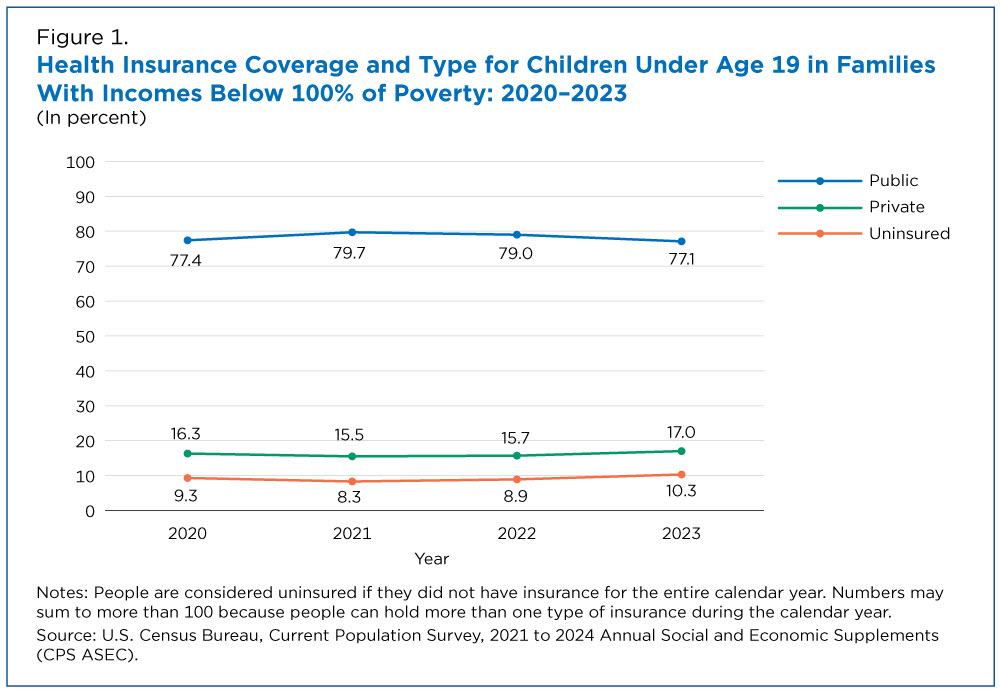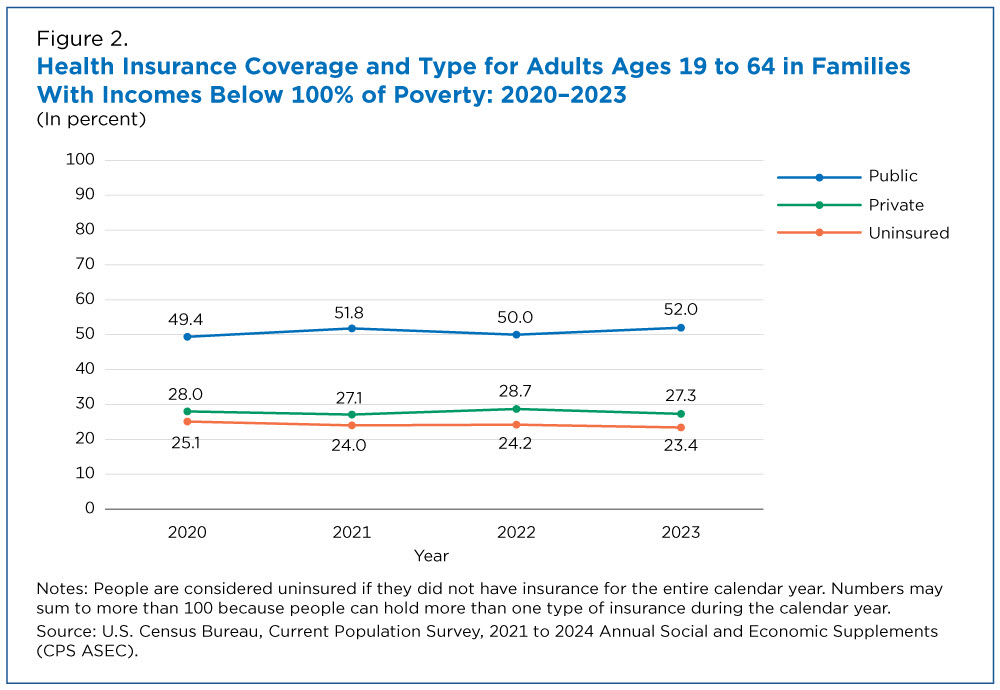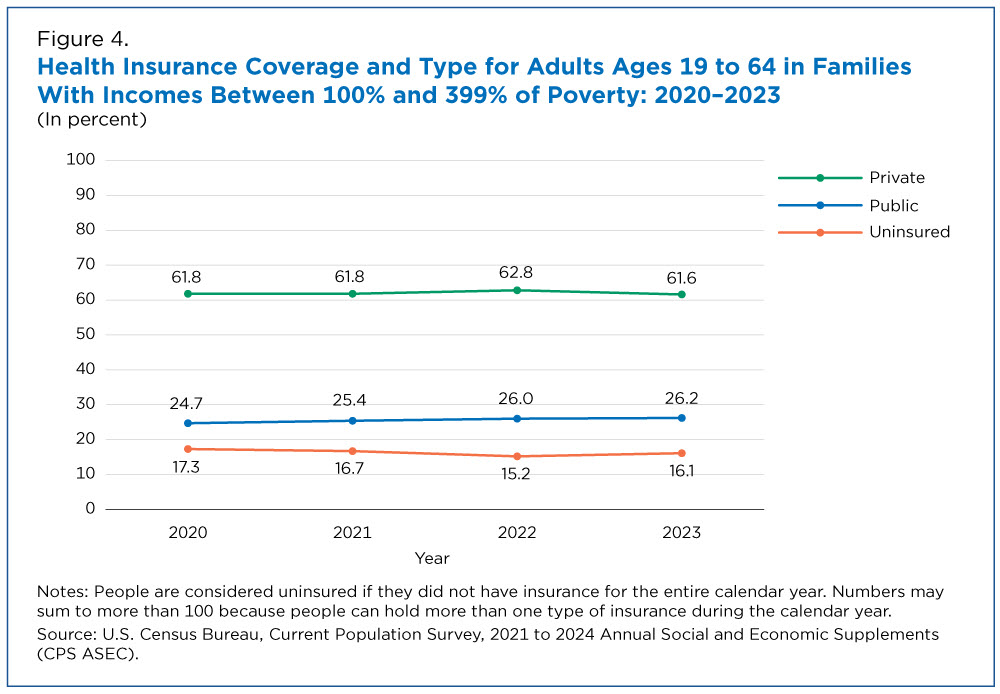While the Share of Uninsured Remained at About 8% in 2023, Rates Varied by Age and Poverty Level
September 12, 2024

The report Health Insurance Coverage in the United States: 2023, reveals health insurance coverage rates and type between 2022 and 2023 for children under age 19, working-age adults ages 19 to 64, and adults age 65 and older.
About a quarter of working-age adults in poverty were uninsured each year between 2020 and 2023.
The family income-to-poverty ratio provides a measure of a family’s economic resources. This ratio compares family income to a poverty threshold based on the age and number of family members.
People are classified as being in poverty if their family income is less than the poverty threshold. Family resources may determine the ability to afford private health insurance, and families below certain thresholds may qualify for public health insurance, such as Medicaid.
Age may also factor into individuals’ access to health insurance coverage and type.
Children under age 19 may have health coverage through a variety of sources, including a parent’s private plan or public programs like Medicaid or the Children’s Health Insurance Program (CHIP).
Adults ages 19 to 64 generally have lower coverage rates than those under age 19 and adults age 65 and older. That’s because their coverage is often directly tied to employment. They do not qualify for programs intended for children and only qualify for public programs under specific medical or income-level circumstances.
Health Insurance Coverage by Age and Income-to-Poverty Ratio
From 2020 to 2023, the share of children under 19 and working-age adults ages 19 to 64 with health coverage differed depending on income and poverty levels.
Among those who lived below the poverty level:
- Most children under 19 and working-age adults had public insurance. In each year, over three-quarters of children under 19 and about half of working-age adults in poverty had public coverage.
- The uninsured rate of children under 19 in poverty ranged from 8.3% to 10.3% between 2020 and 2023.
- About a quarter of working-age adults in poverty were uninsured each year between 2020 and 2023.
Among those living in families with incomes between 100% and 399% of poverty thresholds:
- More than half of children under 19 and working-age adults had private insurance.
- The percentage of children under 19 with public insurance rose from 42.3% in 2020 to 45% in 2023.
- About a quarter of working-age adults had public insurance from 2020 to 2023.
- The uninsured rate among children under 19 dipped between 2020 and 2022 from 7.0% to 6.1% and was 6.7% in 2023.
- The uninsured rate for working-age adults fell from 17.3% in 2020 to 15.2% in 2022, increasing to 16.1% in 2023.
Among those in families with incomes in the highest income-to-poverty ratio group (at or above 400% of poverty):
- Over 90% of children under 19 and working-age adults had private insurance.
- The share of children under 19 with public insurance rose from 5.9% in 2020 to 6.8% in 2023.
- The share of working-age adults with public insurance rose from 5.2% in 2020 to 6% in 2023 while their uninsured rate fell from 4.5% to 4% during this period.
Definitions and more information on confidentiality protection and sampling and nonsampling error are available in the technical documentation.
All comparative statements in this article have undergone statistical testing and, unless otherwise noted, are statistically significant at the 10% significance level.
About Authors



































